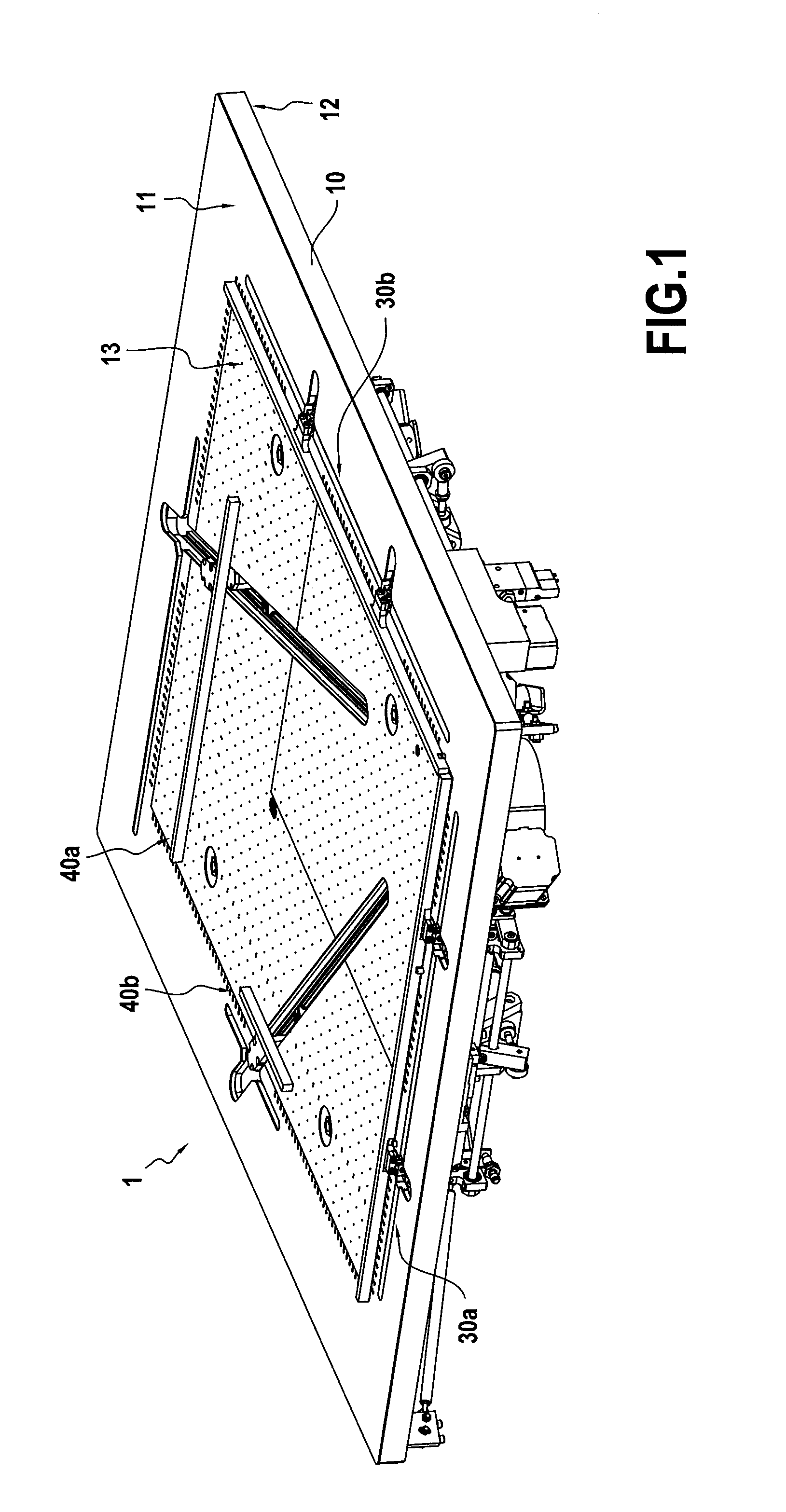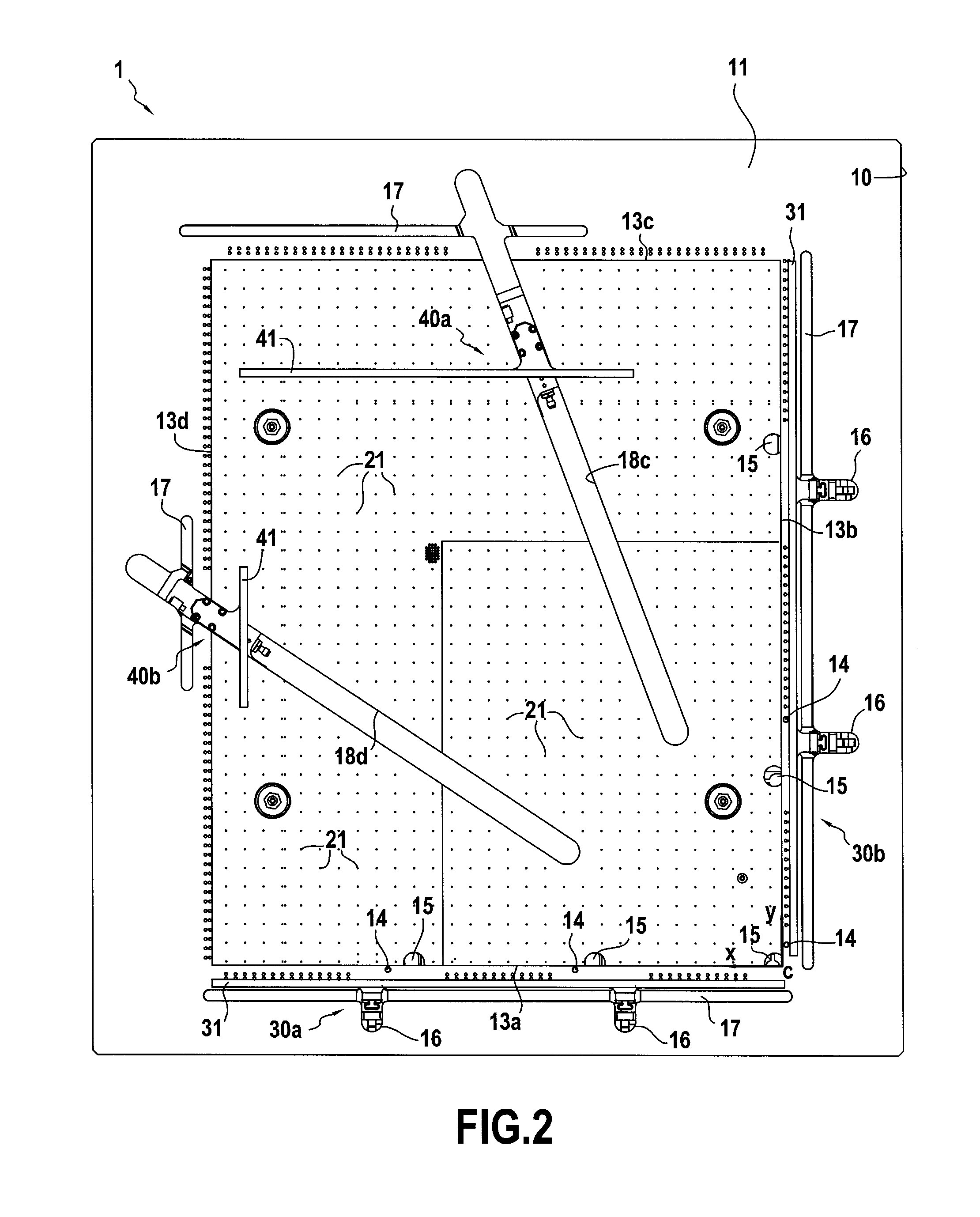Tray for an exposure machine
a technology of exposure machine and exposure tube, which is applied in the direction of electrical equipment, instruments, printing, etc., can solve the problems of small depth of field, insufficient suction force, and insufficient suction force to correct panel curvature,
- Summary
- Abstract
- Description
- Claims
- Application Information
AI Technical Summary
Benefits of technology
Problems solved by technology
Method used
Image
Examples
Embodiment Construction
)
[0069]In order to make the invention more concrete, an example of a tray and an exposure machine is described in detail below with reference to the accompanying drawings. It should be recalled that the invention is not limited to this example.
[0070]FIGS. 1 and 2 show an example tray 1 of the invention. This tray 1 comprises a frame 10 that is substantially in the form of a rectangular parallelepiped having a top face 11 and a bottom face 12. In order to minimize the weight of the tray, and thus its inertia in motion, the frame is of small thickness, less than 30 millimeters (mm), and its bottom surface 12 presents reinforcing ribs providing the tray 1 with overall stiffness and ensuring that its top surface 11 is plane, which surface should be plane to within tolerance of less than 200 μm. These reinforcing ribs also serve to fasten auxiliary devices to the bottom surface 12 of the frame 10.
[0071]The top surface 11 of the frame 10 presents a rectangular zone extending in two orthog...
PUM
| Property | Measurement | Unit |
|---|---|---|
| angle | aaaaa | aaaaa |
| angle | aaaaa | aaaaa |
| angle | aaaaa | aaaaa |
Abstract
Description
Claims
Application Information
 Login to View More
Login to View More - R&D
- Intellectual Property
- Life Sciences
- Materials
- Tech Scout
- Unparalleled Data Quality
- Higher Quality Content
- 60% Fewer Hallucinations
Browse by: Latest US Patents, China's latest patents, Technical Efficacy Thesaurus, Application Domain, Technology Topic, Popular Technical Reports.
© 2025 PatSnap. All rights reserved.Legal|Privacy policy|Modern Slavery Act Transparency Statement|Sitemap|About US| Contact US: help@patsnap.com



